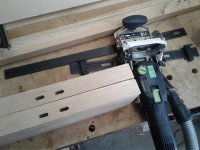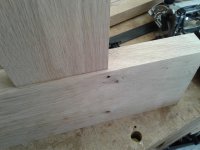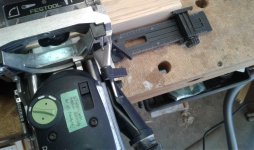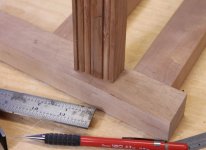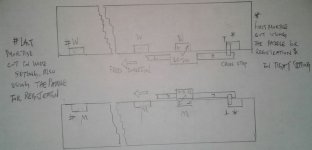The cross stop is not just for edge joining tasks. It can be used for any repetitive mortising work.
Recently, I came across a Festool video on making face frames. Pencil lines were used and tight-to-wide mortise setting was demonstrated. Anytime tight-to-wide setting is used, it means pieces need to be aligned properly during clamping. Almost all pencil lines and alignments will be made unnecessary if the cross stop/trim stop and tight-to-tight setting are used in a face frame operation.
Here's a similar example to a face frame's drawer rail: Making a T-joint on 6 boards without marking lines on all of them. Placement lines were made on only one piece which were then used to set the cross stop. The tight/standard setting was used on all pieces.
Recently, I came across a Festool video on making face frames. Pencil lines were used and tight-to-wide mortise setting was demonstrated. Anytime tight-to-wide setting is used, it means pieces need to be aligned properly during clamping. Almost all pencil lines and alignments will be made unnecessary if the cross stop/trim stop and tight-to-tight setting are used in a face frame operation.
Here's a similar example to a face frame's drawer rail: Making a T-joint on 6 boards without marking lines on all of them. Placement lines were made on only one piece which were then used to set the cross stop. The tight/standard setting was used on all pieces.

